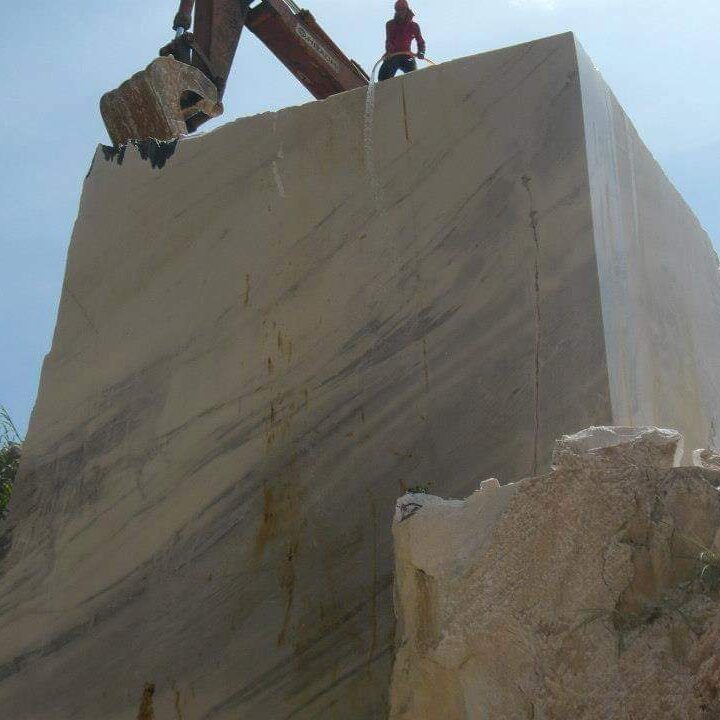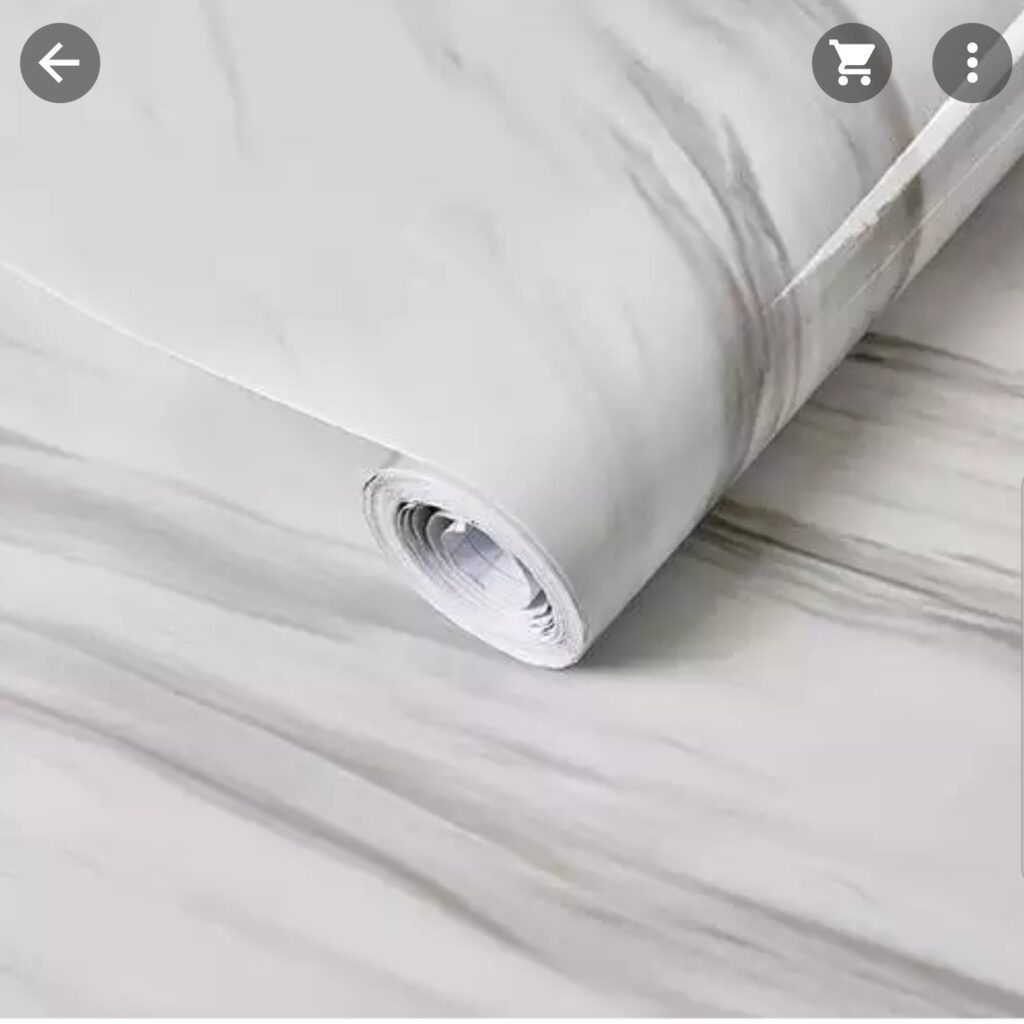
Genuine marble
VS

Film coated marble & Faux marble
Are all marble tables and furniture really marble? This is a question we are often asked, and the simple answer is NO. Unfortunately, a large amount of “marble” furniture in the market are in fact not natural marble at all. We hope that this article can help enlighten our clients to know the differences and to hopefully aid you in making an educated decision when shopping for marble furniture. Before we tackle this question in further detail, let us first begin by answering this important question.
Marble is a naturally occurring metamorphic rock that originates from sedimentary calcium rich carbonate rocks (most commonly Limestone or Dolomite). Limestone is composed of Calcium Carbonate and Dolomite of Calcium Magnesium Carbonate. After many years of exposure to the heat and pressure within the earth, these sedimentary rocks undergo a transformation known as metamorphosis where the stone recrystalizes into a denser stone that is classified as Marble.
Where does marble get its veining and colouration from? Minerals from surrounding materials in the environment are deposited into the stone by water over the years and are “locked in” during the recrystallisation process. As there are a multitude of different minerals that are dependent upon the environment from which the marble originates, marble will often have its own unique colouration and veining depending on its origin. There are many different varieties of marble that come in many different colours and characteristics from all around the world.
Marble is extracted from the earth in a process called quarrying. Our quarries in Malaysia hold an estimated supply of marble that will last over 1000 years. We have a short video on our homepage that will give you a brief glimpse into the process of extracting the marble from the earth. Although the video itself is quite dated, we do encourage you to have a watch of this short video as it should prove to be quite informative and may help piece together some of what we are discussing here.
Marble is a calcium rich stone that can hold a polish. Raw marble begins with a honed finish. The marble is then polished through a multistage process most commonly using diamond pads/abrasives. Just like sanding a piece of timber with sandpaper, you first begin with the coarser/rougher polishing pads and progressively polish with finer and finer polishing pads/abrasives until the surface of the marble itself shines like a mirror. In our factory in Malaysia, this is achieved using our large industrial polishing machinery and for majority of our marble furniture pieces some of this process is also completed by hand using handheld power tools. (This is the process that we use for all of our marble at Marble Miracles Pty Ltd).
Some manufacturers bring their marble slab to a smoother honed finish (not all the way to a full polish) and then apply a resin layer to give the marble its shine and deepen and bring out the colours of the marble. This is often a cheaper and less labour-intensive process in comparison to fully polishing the marble as described in the last paragraph. This type of polish is NOT a natural polish. (We will discuss this again a bit further down).
Now that we have a better understanding of what genuine natural marble is, we can return to the original question of, are all “marble furniture” really marble? The disappointing answer is NO. Unfortunately a surprising number of “marble furniture” is advertised as marble when in reality it is not marble at all or what you see on the surface is not natural marble at all.
We will now broadly classify these other type of marble furniture into 3 different categories and discuss them individually:
- Coated marble
- Film coated marble
- Faux marble
Coated marble can indeed be natural marble slabs but is not always the case (we will discuss this further in the “Faux marble” section below). We did briefly touch on this earlier in regard to how some manufacturers choose to only polish their raw marble slabs not all the way to a full polish but a smoother honed finish and then applying, in most cases, a resin to create the polished look and deepen/bring out the colours of the marble. This indeed is a cheaper and less labour-intensive process in comparison to polishing the marble to its full shine and this will often allow this variant to be sold at a “cheaper” price in comparison.
Why have we decided not to use this method?
- By adding this added layer of material, this layer will eventually begin to peel or flake off. If you know of someone who has had this type of marble furniture for several years, it will be quite common to see areas where this coating has started to peel away from the underlying marble and revealing the unpolished honed marble underneath creating hideous patchiness on the affected areas. This commonly occurs at the edges of the marble slabs where often bubbling can begin to occur and eventually flaking off of the coating. This can often also be accelerated if a slit or damage occurs to the coating which will then allow moisture to work its way between the two layers weakening the bond between the coating and the marble resulting in peeling or flaking. To fix this, the coating would have to be completely removed and a new coating be applied or the underlying marble brought to a full polish after removing the applied coating.
- Yellowing. It has been reported that this type of coating often discolours over time (especially with exposure to UV light) and will often develop a yellowish hue over time.
- Susceptible to damage from heat. The melting point of the resins/coatings used is often lower than that of natural marble and a caution is normally given for coated marble tops as the heat will permanently damage or warp the coating layer.
- This next point is probably more of a personal preference, but we will list it none the less. This form of coating on marble often gives the marble a more “plasticky” look and feel when compared side by side with a natural polished marble top. This however is subjective and some may indeed prefer that.
With all that said, coated marble can indeed be “natural marble”, it is the method of achieving its polish that would be in question. Faux marble can also be coated with a resin coating to give it its shine and this is why we mentioned earlier that not all coated “marble” furniture is actually marble. We will get to this soon.
Film coated marble is arguably the most deceptive of them all. Film coated marble often uses a digitally printed marble pattern that is printed onto a sheet of vinyl (an example shown above in the image of one such roll of marble look vinyl film. Named Jazz White marble film). The marble pattern you therefore see on the surface may appear to be a beautiful marble, however it is completely fake and is indeed just a digital print made to appear like a high quality slab of marble.
So how do they get away with selling this type of “marble” furniture as marble furniture? Often underneath this vinyl sheet they will use a marble slab. The marble slabs used however are often of much poorer quality and by itself contains many flaws that would prevent it from being used naturally to craft a fine piece of marble furniture from. The ugliness and flaws of these slabs are hidden underneath the vinyl sheet(s) and the buyer is made to believe that they are purchasing a beautiful piece of marble furniture for an often much cheaper price. For example, the marble top may appear a beautiful white and grey on the surface, however if cracked open it would reveal the ugly poor quality marble slab underneath. In worse cases we have also seen that some such tabletops/furniture don’t use marble slabs at all, and some are simply just cement slabs covered with the marble look vinyl wrap.
To the untrained eye it is often hard to spot this type of film coated marble tops. In poorer quality products they often may use multiple sheets of vinyl to cover the top (especially for larger items). If you therefore look close enough, you may see a straight line where they join the sheets together and at this joint you most often will see a sudden shift in the pattern of the “marble”. This often would be a telltale sign that the top is vinyl film coated.
Natural marble is also mostly translucent and most varieties allow light to pass through to some degree. Depending on the strength of the light source and the thickness of the vinyl film, the film wrapped tops may prevent light from transmitting through the top. This however unfortunately is not a 100% failproof test.
Apart from the obvious “deceptiveness” of this form of “marble furniture”, this film coated marble shares similar weaknesses to the coated marble that we had discussed above.
Faux marble is an artificial, man made marble slab often made from a proportion of crushed up marble, stone powder, plastic cement, resins, dyes, sand, amongst other materials. This artificial, manmade slab is made to try to mimic the characteristics of natural marble and is not marble at all.
Unfortunately, it is not uncommon for Faux marble furniture or products to be advertised as marble furniture/products. Once again to the untrained eye some may be fooled to believe such claims, however, let’s keep it plain and simple. Faux marble is not marble at all by any stretch of the imagination.
As mentioned a few times earlier in this article, do be cautious as some coated “marble” furniture is in fact coated FAUX “marble” furniture. As often these faux marble tops are coated with a resin outer layer.
The cheaper price tag may be a temptation, however, you truly get what you pay for and in this case that wouldn’t be marble at all.
Faux marble is often susceptible to scratches, to heat and tend to be more brittle than natural marble and if damaged would be more difficult to repair. Natural marble has the advantage of being able to be buffed and repolished if necessary and often achieves a finish close to if not the same as its original state. Yellowing is also a common issue with Faux marble as most contain some form of resin which over the years can discolour.
We hope that you can now see that not all “marble” furniture/products are indeed genuine natural marble and that you will be able to better discern the differences and seek to question what you see out there in the marketplace.
It is our true hope that this article can aid you in your all important purchasing decision, and that it can help you take an educated approach to shopping for your marble furniture or marble products.
If you would like to discuss anything at all in this regard in further detail, please do not hesitate to reach out to one of our marble experts, we would be more than happy to assist you to the best of our ability.
I would like to thank you all who have made it to the end of this article, and we truly would look forward to talking and meeting with you. We warmly invite you to give us a call, drop us an email and visit us at our showroom where we can showcase to you the splendour of natural marble.